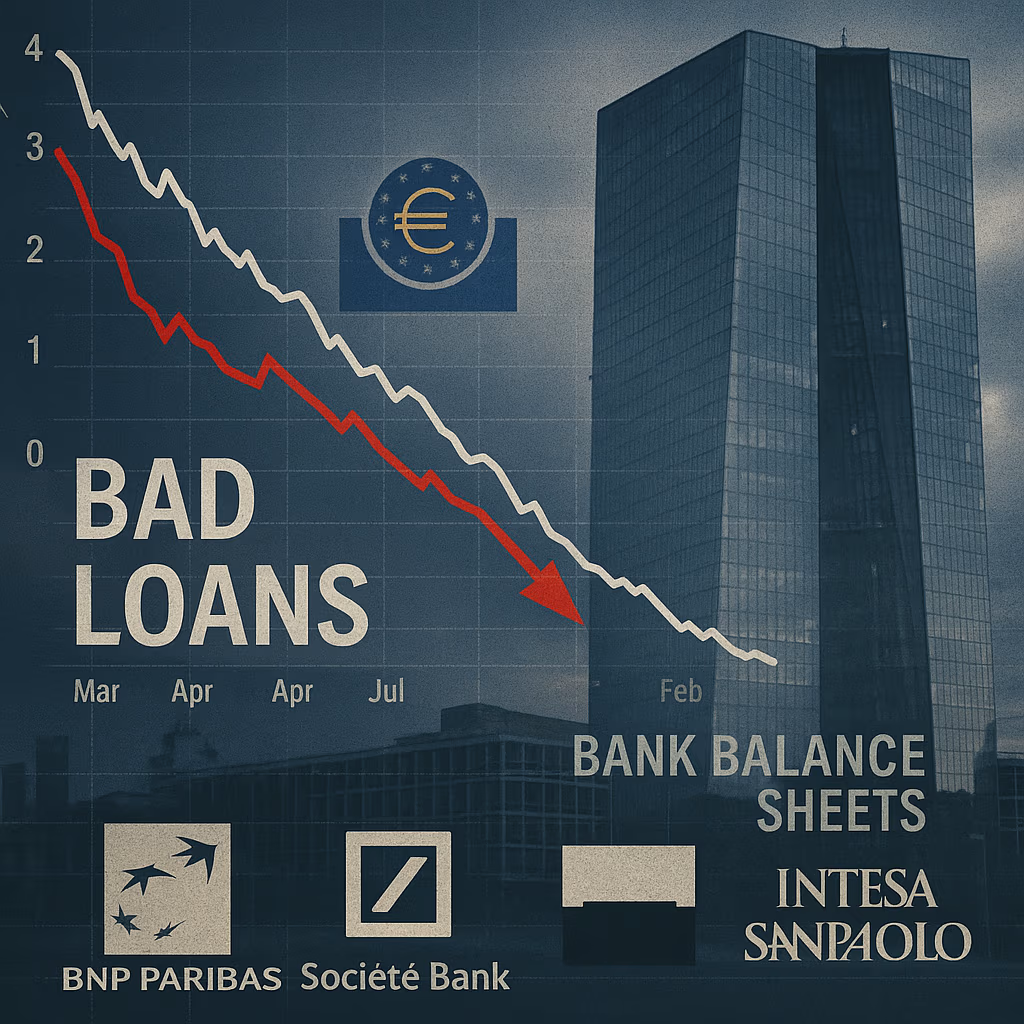European banks are proving more resilient than many had feared, overcoming concerns about a wave of bad loans despite growing signs of economic weakness across the region. While rising interest rates and sluggish growth have increased pressure on borrowers, strong balance sheets, tighter regulation, and improved risk management are helping lenders navigate the turbulence. Still, as Europe’s economy slows, the sector faces questions about how long this resilience can last.
A Stronger Banking Sector Than Before
The European banking system today looks markedly different from a decade ago. After years of reforms following the sovereign debt crisis, lenders are better capitalized, hold higher levels of liquidity, and operate under stricter regulatory oversight. Non-performing loans (NPLs), once a systemic threat in countries such as Italy, Spain, and Greece, have been significantly reduced.
This strengthened foundation has allowed banks to absorb shocks that, in the past, might have triggered broader instability. Even as economic data points to a slowdown in growth across the eurozone, the expected surge in bad loans has not materialized at the scale once feared.
Interest Rates: A Double-Edged Sword
The European Central Bank’s (ECB) rate hikes were initially seen as a lifeline for banks, boosting margins by widening the gap between what lenders pay for deposits and what they earn from loans. For much of the past two years, this has fueled record profits for major institutions.
However, as rates have remained elevated, challenges have emerged. Higher borrowing costs have squeezed households and businesses, raising concerns about defaults. Yet so far, the rise in bad loans has been modest, suggesting that banks are benefiting from stronger underwriting standards and diversified loan portfolios.
Economic Slowdown Brings Renewed Concerns
Europe’s economic outlook has weakened due to sluggish industrial output, falling consumer confidence, and external pressures from trade tensions and global energy volatility. Traditionally, such conditions would spark fears of rising defaults, particularly in sectors like real estate, retail, and small business lending.
But European banks have so far contained risks. Many lenders moved early to increase provisions against potential losses, building buffers that provide reassurance to both regulators and investors. The proactive stance signals lessons learned from past crises, where delayed recognition of bad loans only worsened outcomes.
Regulatory Reforms Pay Off
The banking union framework, established in the wake of the eurozone debt crisis, has made a critical difference. Under stricter European Banking Authority (EBA) rules, banks must hold more capital against risky assets and report problem loans more transparently.
This has not only improved confidence in the sector but also forced banks to clean up balance sheets earlier. For investors, the result has been greater transparency and a perception that the risk of hidden loan losses is significantly reduced compared to the past.
Regional Variations
While the overall picture is positive, differences remain across Europe. Southern European banks, particularly in Italy and Greece, still carry higher levels of bad loans relative to peers in northern Europe. Yet even in these markets, progress has been notable. National governments, along with EU initiatives, have supported schemes to securitize and offload distressed assets, helping banks refocus on new lending.
Meanwhile, large universal banks in Germany and France continue to benefit from diversified income streams, which include investment banking and wealth management. This diversification helps cushion against rising defaults in consumer or corporate lending.
Investor Sentiment Improves
The stronger-than-expected performance of banks has not gone unnoticed by investors. European banking stocks have staged a recovery, supported by steady earnings and higher dividends. While market sentiment remains cautious due to economic headwinds, the perception of systemic risk has eased compared to previous downturns.
Bond investors, too, have shown renewed confidence, with strong demand for bank-issued debt instruments. This allows lenders to maintain access to capital markets at relatively favorable terms, reinforcing financial stability even as the economy slows.
Remaining Risks on the Horizon
Despite the resilience, risks remain. A prolonged economic slowdown could eventually erode borrower capacity, particularly among small businesses and highly leveraged households. Real estate markets in several countries also remain under pressure, and any sharp correction could test banks’ loan books.
Additionally, political uncertainty, energy price volatility, and external shocks from global markets could trigger renewed instability. Regulators have cautioned that while banks are stronger, vigilance is necessary to ensure that resilience does not give way to complacency.
Looking Ahead
The next year will test whether European banks can sustain their current resilience in the face of continued economic weakness. Much will depend on the trajectory of ECB policy. Should interest rates remain high for longer, defaults may creep upward, while rate cuts could relieve pressure on borrowers but compress bank margins.
Either way, the banking sector’s current position is stronger than in past downturns. With higher capital buffers, proactive provisioning, and regulatory oversight, European banks are better prepared to handle stress. The challenge lies in maintaining this balance if economic conditions worsen further.
Conclusion: Resilience Amid Uncertainty
European banks have defied expectations by overcoming fears of widespread bad loans even as economic growth slows. Improved capital strength, tighter regulation, and prudent risk management have given lenders the tools to weather turbulence. While risks persist, the absence of a severe credit deterioration highlights how much the sector has changed since the crises of the past decade.
For policymakers, the outcome is encouraging: a stronger banking system provides a buffer against economic shocks. For investors, it reinforces confidence that European banks can remain stable, even in a weaker growth environment.





